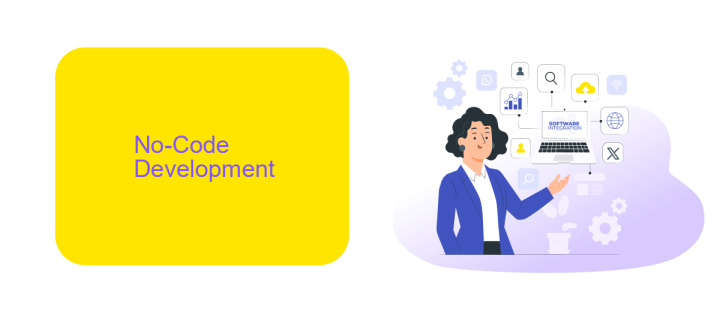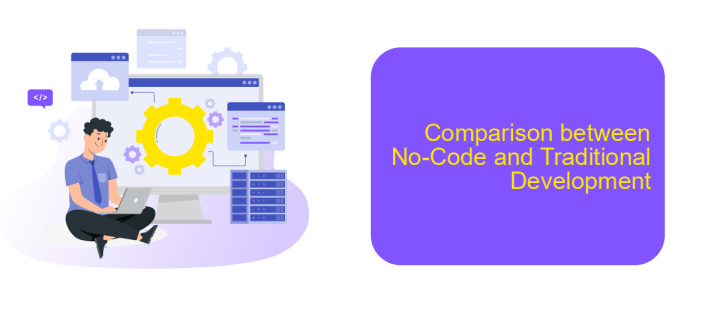No-Code vs Traditional Development
In today's rapidly evolving tech landscape, the debate between no-code and traditional development has gained significant traction. No-code platforms promise to democratize software creation, enabling non-developers to build applications quickly and efficiently. Meanwhile, traditional development offers unparalleled flexibility and control for complex, custom solutions. This article explores the strengths and weaknesses of both approaches to help you decide which is right for your next project.
Introduction
The rise of no-code platforms has revolutionized the way we approach software development, making it more accessible to a broader audience. These platforms allow individuals with little to no programming experience to create functional applications, often through intuitive drag-and-drop interfaces. On the other hand, traditional development methods, which require extensive coding knowledge, continue to be the backbone of complex, custom solutions.
- No-code platforms democratize software creation, enabling non-developers to build apps.
- Traditional development offers unmatched flexibility and control for complex projects.
- Integration services like ApiX-Drive simplify the connection between various applications, enhancing both no-code and traditional development.
Choosing between no-code and traditional development depends on various factors, including project complexity, available resources, and specific business needs. While no-code platforms offer speed and simplicity, traditional development provides depth and customization. Ultimately, the best approach may involve a combination of both, leveraging the strengths of each to achieve optimal results.
No-Code Development

No-code development is a revolutionary approach that empowers individuals to create applications without needing to write a single line of code. This method leverages intuitive visual interfaces, drag-and-drop tools, and pre-built templates, making it accessible to those without technical expertise. By simplifying the development process, no-code platforms enable faster project turnaround times and reduce dependency on traditional developers, fostering innovation and creativity across various industries.
One of the significant advantages of no-code development is its ability to easily integrate with various third-party services. For instance, ApiX-Drive is a powerful tool that facilitates seamless integration between different applications, automating workflows and enhancing productivity. By using ApiX-Drive, no-code developers can effortlessly connect their apps with other essential services, ensuring a smooth and efficient operation. This capability not only saves time but also allows businesses to focus on their core objectives, driving growth and success.
Traditional Development

Traditional development involves writing code manually using programming languages like Java, Python, or C#. This approach offers unparalleled flexibility and control over the software development process, allowing developers to create highly customized solutions tailored to specific business needs. However, this method often requires a significant investment of time and resources, as well as a deep understanding of coding principles and best practices.
- Requirement Analysis: Understanding and documenting what the software needs to achieve.
- Design: Creating architectural plans and design documents to guide development.
- Coding: Writing the actual code that will run the software.
- Testing: Conducting various tests to ensure the software is bug-free and meets requirements.
- Deployment: Releasing the software for use in a production environment.
- Maintenance: Ongoing updates and bug fixes to keep the software functional and secure.
Integrating third-party services and APIs is often a crucial part of traditional development. Tools like ApiX-Drive can simplify this process by offering seamless integration capabilities, allowing developers to connect multiple services without extensive coding. While traditional development can be complex, it provides the robustness and scalability needed for enterprise-level applications.
Comparison between No-Code and Traditional Development

No-Code development offers a streamlined approach to building applications without the need for extensive coding knowledge. This method empowers individuals and small businesses to create functional software quickly and cost-effectively. On the other hand, traditional development relies on skilled programmers to write complex code, which can be time-consuming and expensive.
One of the main differences between these two approaches lies in their flexibility and scalability. No-Code platforms are typically easier to use but may offer limited customization options compared to traditional development, which allows for highly tailored solutions.
- No-Code is user-friendly and accessible to non-developers.
- Traditional development provides greater control and customization.
- No-Code solutions can be deployed faster.
- Traditional development requires more time and resources.
When it comes to integrating various services, No-Code platforms often include built-in tools for seamless integration. For instance, services like ApiX-Drive simplify the process of connecting different applications, making it easier for users to automate workflows without writing a single line of code. In contrast, traditional development may require custom integration solutions, which can be more complex and costly.
- Automate the work of an online store or landing
- Empower through integration
- Don't spend money on programmers and integrators
- Save time by automating routine tasks
Conclusion
In conclusion, the choice between no-code and traditional development largely depends on the specific needs and resources of a project. No-code platforms offer a faster, more accessible route to creating applications, making them ideal for small businesses or individuals with limited technical expertise. However, they may lack the flexibility and scalability required for complex, large-scale projects that traditional development can provide.
Furthermore, integrating various services and tools can be streamlined using platforms like ApiX-Drive, which simplifies the connection between different applications without the need for extensive coding knowledge. This can enhance the functionality of no-code solutions, bridging some of the gaps between no-code and traditional development. Ultimately, understanding the strengths and limitations of each approach will enable better decision-making and more effective project execution.
FAQ
What is No-Code development?
How does Traditional Development differ from No-Code?
Can No-Code platforms handle complex applications?
How can businesses integrate different applications using No-Code platforms?
Is No-Code development secure?
Time is the most valuable resource for business today. Almost half of it is wasted on routine tasks. Your employees are constantly forced to perform monotonous tasks that are difficult to classify as important and specialized. You can leave everything as it is by hiring additional employees, or you can automate most of the business processes using the ApiX-Drive online connector to get rid of unnecessary time and money expenses once and for all. The choice is yours!


